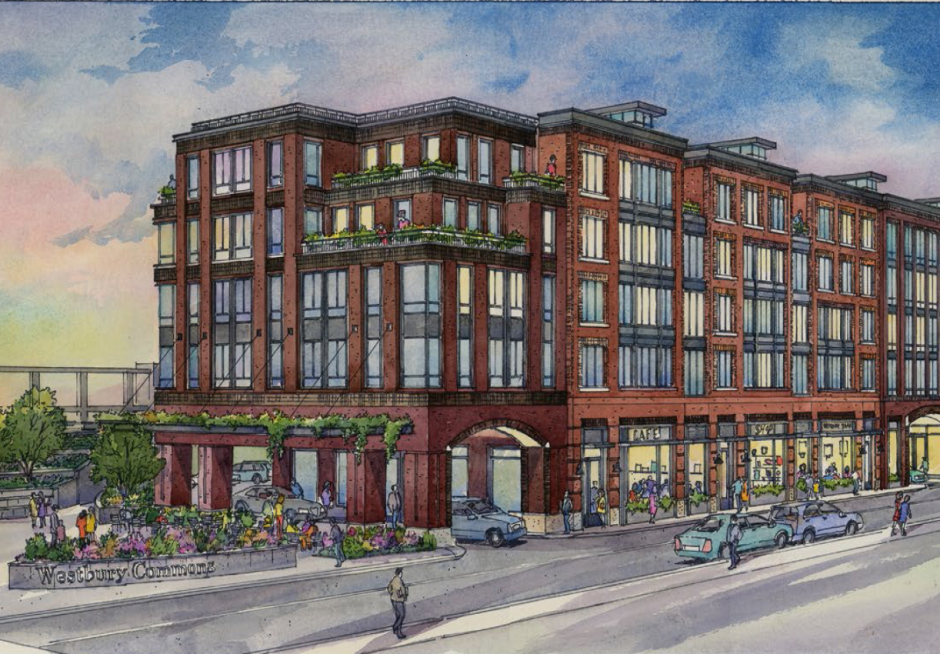What is Transit-Oriented Development?
Transit-Oriented Development (TOD) is the intentional development of housing, businesses, and community spaces around public transit. It not only creates vibrant, walkable neighborhoods, but allows for more housing to be built in less space, increases transit ridership, reduces car traffic and pollution, improves access to jobs and recreation, and bolsters local economic activity.
New York has a long history of developing around transit. From the suburban towns that grew along streetcar and rail lines in the late 1800s to the "Terminal City" neighborhood built alongside Grand Central in the early 1900s, the region has prospered by taking advantage of the symbiotic relationship between development and transit.

Transit-Oriented Development at the MTA today
Today, MTA's Transit-Oriented Development (TOD) group builds on that legacy by connecting development with transit and tapping the value that proximity creates. The department facilitates land-use policies that encourage station improvements and dense housing in the city, partners with municipalities and developers to create transit-adjacent developments in the suburbs, and strategically positions MTA real estate to bring the most benefit to our system. Learn more about different aspects of our work below.
Connecting the region

The First Mile Last Mile Toolkit: Helping make car-free connections to commuter rail
As part of the MTA’s efforts to make system access more equitable and sustainable, TOD developed an interactive online toolkit that helps users identify and implement ways to make Metro-North and LIRR stations more accessible by foot, bike, and personal wheeled devices.

Wyandanch Rising: A new transit-oriented district for Suffolk County
To help the Town of Babylon create a walkable, transit-oriented neighborhood next to LIRR’s Wyandanch Station, the MTA swapped land parcels with the town, constructed a garage, and rebuilt the station building. The development boasts 300 residential units, a park, and a YMCA.
Improving stations with zoning tools

One Vanderbilt: Privately built accessibility upgrades and new concourse
TOD worked with city officials to create an innovative zoning tool that induced the developer to finance, construct and maintain an extensive, $200M concourse below Grand Central Terminal, expanding its footprint and significantly improving access to Metro-North, LIRR, the subways, and midtown Manhattan.

Zoning for Accessibility: Leveraging development to improve stations
The MTA partnered with the NYC Department of City Planning and Mayor's Office for People with Disabilities to create new zoning legislation that leverages transit-proximate development to accelerate ADA-accessible station improvements. Learn more about our land use planning in the link above.
Unlocking value in MTA assets

343 Madison: Redeveloping MTA's former HQ with a new LIRR entrance
TOD negotiated the redevelopment of MTA’s former headquarters site. The ground lease ensures private construction of a direct entrance to the LIRR Grand Central Madison concourse and generates revenue for the MTA. Construction of the entrance will begin in 2024 independent of the tower above.

Westbury Station: Developing multifamily residential housing next to a Main Line station in Nassau County
TOD is advancing a mixed-use, transit-oriented development on a 1.92-acre former surface lot at LIRR’s Westbury Station through a long-term ground lease with the Gotham Organization. By repurposing surplus property created by recent station investments, the project will deliver new homes, including income-restricted units, along with neighborhood-serving retail and a new public plaza space that enhances station access and the rider experience. The ground lease will generate recurring revenue to fund MTA's transit investments while keeping the land in public ownership, strengthening Westbury’s walkable downtown, activating station areas, improving customer amenities, and leveraging real estate to fund better transit.